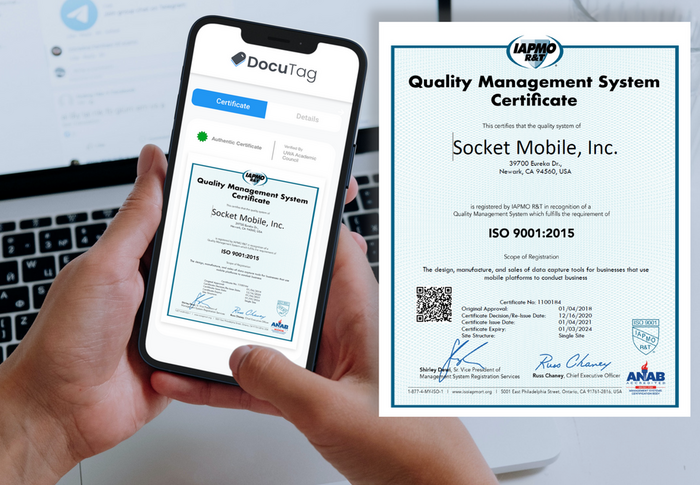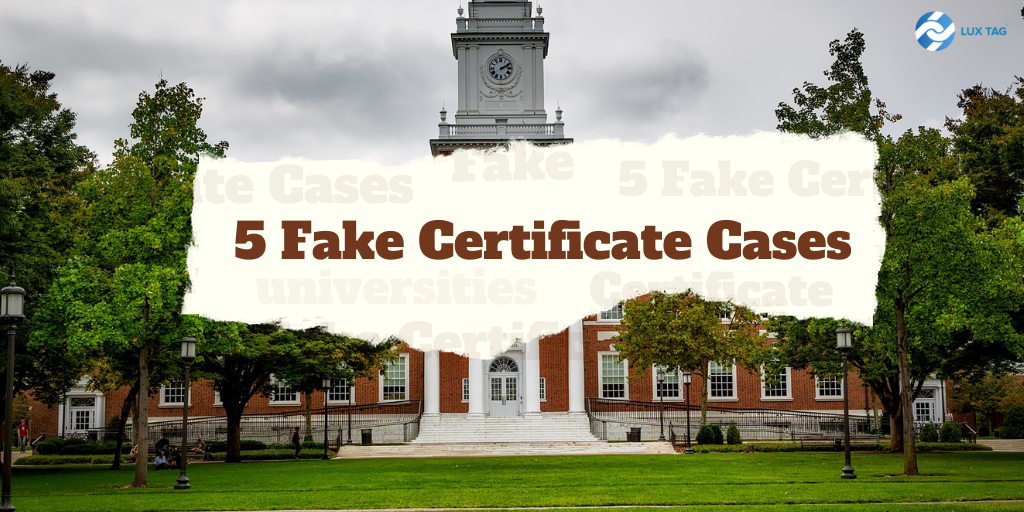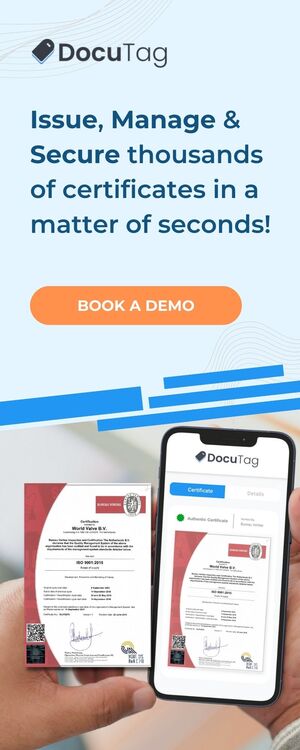The reputation of a university is built on the quality of its faculty, students, research, and educational programs. However, one of the most significant threats to a university’s reputation is the presence of fake certificates. In this article, we will discuss five scandalous cases where universities have been negatively impacted by fake certificates
Jump to specific parts:
The Case of Stanford University
The Case of the University of Central Lancashire
The Case of Ashwood University
How to put a stop to theses cases
1) The Case of Axact
Axact was a Pakistani company that allegedly ran a sophisticated operation to produce fake degrees and certificates from over 300 fictitious universities. The company would create websites for these universities and issue degrees and certificates to individuals who paid for them. Axact’s clients included students, professionals, and even government officials.
The Axact scandal came to light in 2015 when The New York Times published an investigative report on the company’s practices. The report revealed that Axact had created a vast network of fake universities and sold degrees and certificates to individuals worldwide. The report also highlighted the involvement of several universities in the United States, which had awarded degrees to individuals based on fake transcripts and diplomas from Axact.
The scandal led to the arrest of several Axact employees and executives, including the CEO, Shoaib Ahmed Sheikh. The Pakistani government launched an investigation into the company’s practices, and several countries, including the United States, started scrutinizing their educational systems to identify any individuals with fake degrees and certificates.
The Axact scandal also had significant consequences for the reputation of the education system in Pakistan. The country’s Higher Education Commission (HEC) had to review and verify the degrees of thousands of students who had graduated from Pakistani universities. The scandal raised concerns about the credibility of Pakistan’s education system and the need for the government to take strict measures to prevent fraudulent practices.
Takeaway: The Axact scandal exposed the extent of the problem of fake certificates in the global education industry and raised questions about the efficacy of quality control measures. The scandal also highlighted the need for universities to be vigilant in identifying and preventing fraudulent practices.
The Case of Stanford University
In 2019, Stanford University faced a scandal that involved a student who paid a third-party company to create a phoney transcript, which was submitted to Stanford University as part of the student’s application for admission. The student was later discovered to have submitted false information and was expelled from the university.
The incident exposed a weakness in the university’s admissions process and quality control measures. The case also raised concerns about the reliability of the educational system and the potential impact of fake certificates on society. The university released a statement condemning the use of fake transcripts and reaffirming its commitment to maintaining the integrity of its academic programs.
Takeaway: The Stanford University case highlights the importance of maintaining rigorous quality control measures and educating students and the public about the risks and consequences of using fake certificates.
3) The Case of Monash University
In 2019, Monash University, one of Australia’s leading universities, found itself embroiled in a scandal involving the sale of fake degrees to students.The case began when it was discovered that a student, who had graduated from Monash University in 2017, had obtained a fake degree.
The student had purchased the degree from a diploma mill that had been selling fake degrees and transcripts to unsuspecting students for years. The student also had a significant amount of money for the fake degree, which had allowed him to secure a job in his chosen field.
After this initial discovery, Monash University launched an investigation into the matter. The investigation revealed that several other students had also obtained fake degrees and transcripts from the same diploma mill. It was estimated that the mill had made millions of dollars by selling fake degrees and transcripts to students worldwide.
The scandal caused significant damage to Monash University’s reputation, The university quickly issued a statement condemning the fraudulent activities and promising to take strict action against those responsible.
In response to the scandal, Monash University implemented several new measures to prevent similar incidents from happening in the future. The university began conducting regular audits of its certification processes, and it also introduced new measures to detect fraudulent activities. These measures included an automated system that would alert the university to any irregularities in the certification process.
Takeaway: the Monash University fake certificates scandal highlights the need for universities to remain vigilant maintain transparency and take strict measures to prevent fraudulent activities.
4) The Case of the University of Central Lancashire:
The University of Central Lancashire (UCLan) is a well-known institution of higher education located in Lancashire, England. However, in 2017, the university was embroiled in a scandal involving the sale of fake degrees and certificates to students.
The scandal involved many individuals who had obtained degrees and certificates from the university through fraud. The issue raised questions about the quality of education the university provides and its ability to prevent such scams from happening.
The scandal led to a loss of credibility for UCLan, and the latter took swift action to address the situation, launching an investigation into the matter and vowing to implement strict quality control measures to prevent future incidents. The university also apologized for the situation, and it announced that it would be working with the relevant authorities to ensure that those involved in the scandal were held accountable.
Takeaway: The UCLan case highlighted the need for universities to maintain rigorous quality control measures to ensure the integrity of their certificates. The case also underscored the educational system’s importance of transparency and accountability.
5) The Case of Ashwood University
Ashwood University was an online diploma mill that operated between 2006 and 2008 and claimed to offer accredited degrees and certificates in various fields of study. The university had no physical campus, no faculty, and no academic curriculum. Instead, it operated as a website that offered degrees and certificates for a fee, with no requirements for coursework or academic performance. The website even claimed to have accreditation from a non-existent accrediting body, the International Accreditation Association.
The scandal broke in 2008 when an investigative report by the Washington Post exposed Ashwood University’s fraudulent practices. The report revealed that the university had sold fake degrees and certificates to individuals worldwide, with clients in the United States, Europe, and Asia. The report also revealed that many of Ashwood University’s clients were government officials, including a deputy minister in the government of Liberia and a member of the Indian parliament.
The scandal led to several investigations by regulatory bodies, including the Federal Trade Commission (FTC) and the U.S. Department of Education. The FTC filed a lawsuit against the operators of Ashwood University, resulting in a court order to shut down the website and pay a fine of $22 million for defrauding customers. The U.S. Department of Education also issued a warning to students and employers about the risks of using fake degrees and urged them to verify the authenticity of certificates before accepting them.
Takeaway: The impact of the scandal on the education industry was significant. It exposed the vulnerabilities of online education and the ease with which diploma mills can operate and deceive unsuspecting customers. It also revealed the risks and consequences of using fake credentials, including loss of credibility, legal and financial penalties, and even the risk of endangering public safety in professions such as medicine and engineering.
How to Put a Stop these Cases

The main reason for covering the abovementioned cases is to emphasize the danger that fake certificates cause to their holder and surroundings, putting both people’s lives and businesses at high risk. Thus, a definite solution to fake credentials has become a must!
As physical certificates proved to be error-prone and easily faked, We’ve developed DocuTag, a simple-to-use solution for organizations looking to secure their certificates’ authenticity and digitize their certification process efficiently and affordably.
How? Docutag uses blockchain, a technology that renders your certificates impossible to counterfeit. Our solution gives each of your credentials a unique QR code that anyone can scan to verify the authenticity of the certificates in seconds.
Want to find out more about DocuTag? Check out our website.





